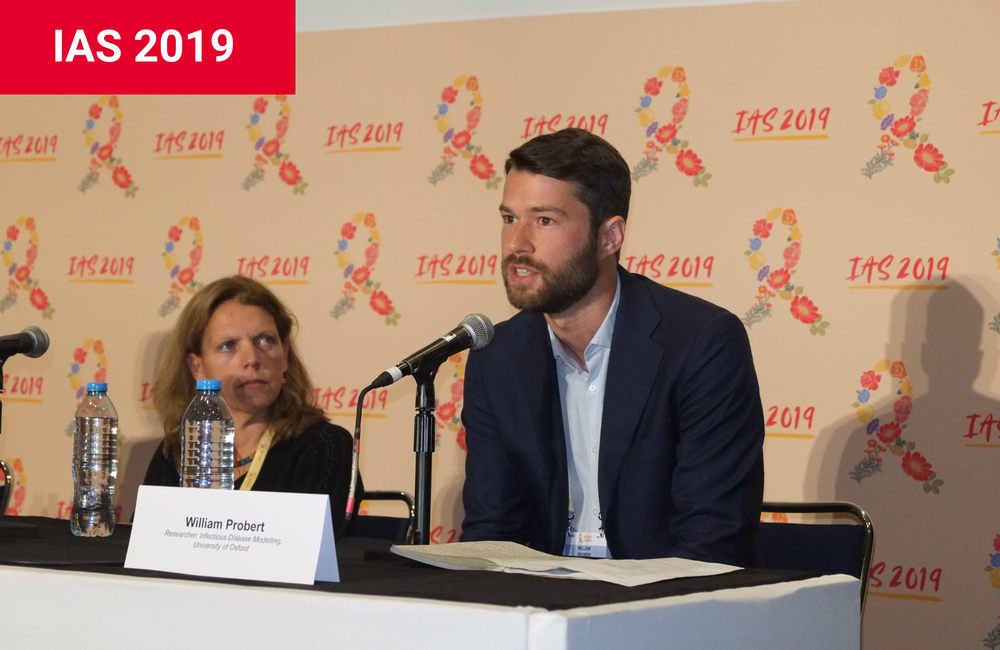
Universal test and treat programmes need to prioritise reaching young people to reduce HIV transmission, an analysis of the PopART HIV prevention trial presented at the 10th International AIDS Society Conference on HIV Science (IAS 2019) shows.
The groups most likely to transmit HIV were men between the ages of 25 and 29, and women between the ages of 20 and 24, researchers found, after analysing the genetic profile of viruses acquired by participants in the study.
If all transmissions in these age groups had been prevented by treatment, HIV incidence would have been 20% lower.
Furthermore, two-thirds of all transmissions were estimated to have been from men to women, emphasising the importance of engaging young men in care and ensuring that they can maintain undetectable viral load.
The PopART study was a cluster-randomised trial of the impact of a community universal test-and-treat strategy on HIV incidence. The trial took place in communities in Zambia and KwaZulu Natal, South Africa. Communities were randomised to receive standard HIV testing and treatment services or to receive door-to-door testing and linkage to HIV care, with immediate treatment.
HIV incidence fell by 30% in the communities randomised to the intervention compared to those randomised to standard-of-care services.
Investigators wanted to know whether any groups of people were more likely to transmit HIV in this study, as a result of not being on treatment, disengaged from treatment or experiencing treatment failure.
They also wanted to test the extent to which models of transmission developed by the researchers matched the evidence gathered from genetic studies of transmission clusters.
Dr William Probert of the Oxford Big Data Institute presented findings from the investigation.
The investigators developed a transmission model, based on trial data, and modelled sexual networks using behavioural data. Their model predicted that 62% of all transmissions occurred from men to women and that men were 5.5 years older than their female partners.
The investigators then looked at 180 probable cases of transmission identified through the genetic similarity of the viruses, to establish the age profile of people passing on HIV to partners. The technique is known as phylogenetic analysis and has been used in many large studies to look at patterns of HIV transmission and locations in which transmission is taking place.
Results of the phylogenetic analysis matched the model’s prediction almost exactly. Phylogenetic analysis found that 62% of transmissions were from men to women and that men were 5.4 years older than their female partners. Women who transmitted HIV were 3.9 years older than their male partners.
Preventing all transmissions from men aged 25 to 29 would have prevented 20% of all infections that took place in the PopART study. Preventing all transmission from women aged 20 to 24 would have prevented 19% of all infections, suggesting that even though a smaller number of transmissions took place from women, these transmissions had a bigger cumulative impact in the study population, as older males in turn transmitted HIV to younger women.
“HIV testing needs to be truly universal – it’s essential for us to find and engage young people, especially young men, if we are serious about eliminating HIV as a public health problem in sub-Saharan Africa,” Probert told the conference.
Probert W et al. Quantifying the contribution of different aged men and women to onwards transmission of HIV-1 in generalised epidemics in sub-Saharan Africa: A modelling and phylogenetics approach from the HPTN071 (PopART) trial. 10th IAS Conference on HIV Science, Mexico City, abstract TUPDD0206LB, 2019.
View the abstract on the conference website.
